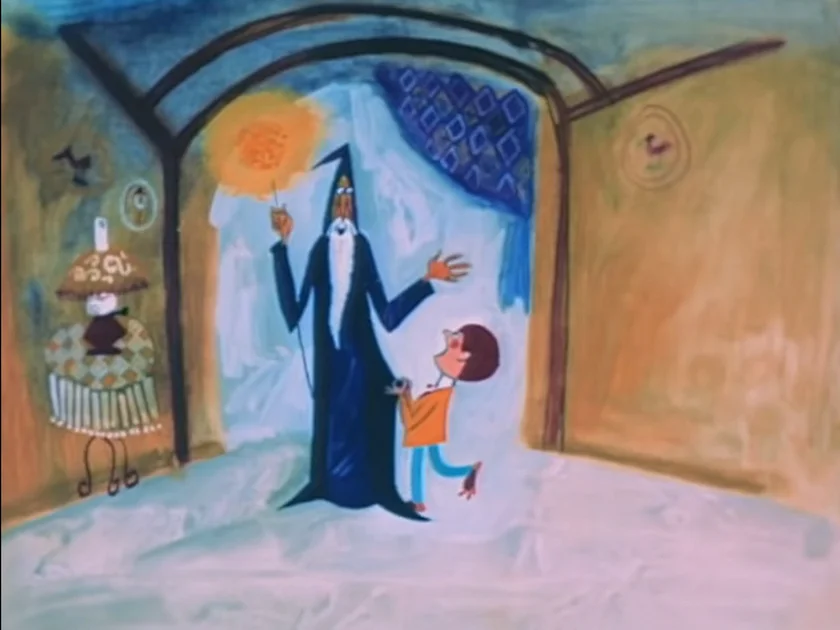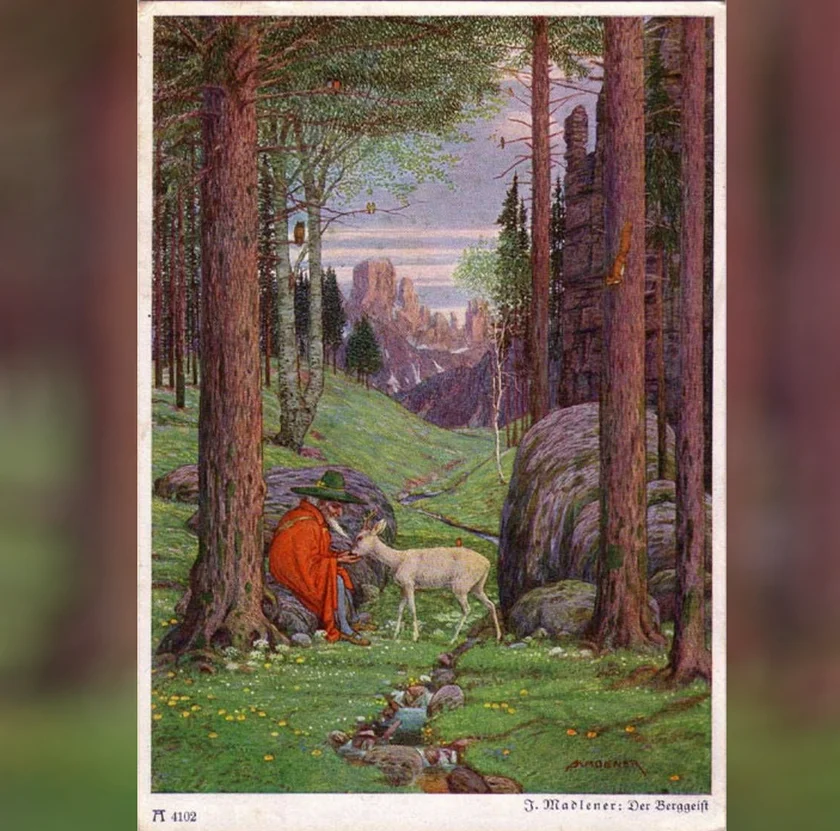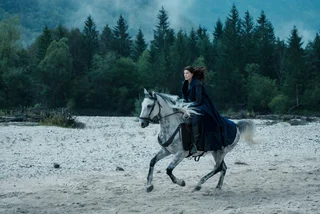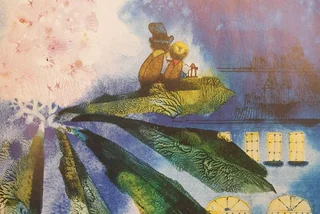“The Lord of the Rings” and “The Hobbit” author J. R. R. Tolkien was born 130 years ago this week, on Jan. 3, 1892. The books have some little-known Czech connections: the first screen adaptation of “The Hobbit” was a strange short film made in Prague in 1966 while it has been theorized that Gandalf has Czech roots.
Most people know director Peter Jackson’s epic nine-hour, three-film version of “The Hobbit,” or the earlier 78-minute animated version made by U.S. company Rankin/Bass in 1977. But the almost unknown 1966 Czech version of the story clocks in at 12 minutes and is the first film adaptation of any Tolkien work.
The animated short was made by long-time Prague-based animator Gene Deitch and Czech illustrator Adolf Born. Both are well-respected artists; Deitch’s cartoon “Munro” won an Oscar in 1961 for Best Animated Short, while Born received the Knight of the Order of Arts and Letters from France.
American film producer William L. Snyder acquired the rights to adapt “The Hobbit” in 1964 with the condition that he produce something by 1967, or lose the rights. Snyder ran Rembrandt Films, a company that produced animation in Prague under contract for the international market, making the later Tom and Jerry cartoons, for example, as well as Popeye and Beetle Bailey cartoons.
Snyder tried to raise money for an animated feature but was having little luck. With the clock ticking, sometime in 1966 or early 1967, he had Deitch and Born churn out a bare-bones cartoon using mostly cutouts and still pictures with a plot bearing only a slight resemblance to the novel. Gollum becomes Goloom, and the dragon Smaug becomes Slag. A princess named Mika is added to the plot because everyone likes princesses. Production took about one month.

The film was shown only once, on June 30, 1967, at a small screening room in New York. Snyder filled the audience with passers-by, whom he gave 10 cents each, which they then returned as the admission.
Snyder used this one screening to claim he fulfilled the contractual obligation of showing the film to a paying audience before July 1, 1967, so he could then use his option to extend the filming rights.
PARTNER ARTICLE
The film then seemingly vanished from the face of the earth.
Deitch mentioned the otherwise unknown cartoon in 2012 in a blog post, and Rembrandt Films, now run by Snyder’s heirs, subsequently found it in their archives and posted it on YouTube.
With the rights extended, Snyder in 1967 or ’68 approached Czech animator Jiří Trnka, who was called “the Walt Disney of Eastern Europe.” He is mainly known for puppet animation but also did classical picture animation and book illustrations.
Trnka made a few sketches for the more elaborate version of “The Hobbit,” but reportedly was put off by the still slap-dash approach taken by Snyder, who had still not secured adequate funding.
A recent tweet by the Animation Obsessive account shows the sketches, though the account of the story is a bit wrong. The completed but albeit short Deitch and Born version was a separate project from the never-finished Trnka one. Both involved Snyder as a producer.
Character designs by Jiřà Trnka for The Hobbit (1966), dir. Gene Deitch
— Animation Obsessive (@ani_obsessive) April 19, 2021
Deitch wasn't able to finish Trnka's version of The Hobbit -- he ultimately hired the Czech illustrator Adolf Born to make the film pic.twitter.com/am8OUhihtC
Trnka passed away in 1969, before production on the cartoon was fully sorted out, so the handful of sketches are all that remain of that attempt. Snyder subsequently sold back his rights to “The Hobbit” to Tolkien. None of the ideas from this planned feature were used by Rankin/Bass in their version a decade later.
As for the Czech roots of the wizard Gandalf, he was allegedly inspired by the mythical figure Krakonoš, the protector of the Krkonoše Mountains in the northern Czech Republic and southwestern Poland.
Tolkien took much of his inspiration from German legends. Before World War II, there was a large German-speaking population in the Czech border areas, including the Krkonoše Mountains, sometimes translated into English the Giant Mountains for the mythical spirit of the giant that protects them.
Germans, Czechs, and Poles share the same legend of the spirit of Krkonoše Mountains, though the name changes. In German, Krakonoš is called Rübezahl and in Polish, he has several names including Karkonosz and Rzepiór.
This spirit originally was more of a mountain demon, depicted with horns and a long tail. He would seek revenge against people who crossed him and play tricks on others. Over time his look and nature softened until he became a kindly man in a floppy hat who would aid and protect the poor and people with good hearts.

Tolkien somehow obtained a postcard of a painting by German artist Josef Madlener called “Der Berggeist” (The Mountain Spirit), part of a series of paintings inspired by folklore such as the Rübezahl tale. Tolkien at some point wrote “the origin of Gandalf” on the back of the postcard, making the direct connection.
The painting shows a man seated on a rock by a stream, petting a deer. The man sports a white beard and has a wide-brimmed hat and red cape.
How and when Tolkien acquired the postcard is a mystery. According to Humphrey Carpenter’s popular biography, Tolkien stated he bought it in 1911 in Switzerland. But later research shows the painting wasn’t created until 1925 or ’26, and the postcard wasn’t published until the late 1920s. “The Hobbit” wasn’t published until 1937 and “The Lord of the Rings” in 1954–55.
The name Gandalf seems to stem from Norse mythology, but he embodies many of Rübezahl/Krakonoš’s later attributes such as looking for people with pure hearts and having a knowledge of medicine.












 Reading time: 4 minutes
Reading time: 4 minutes 




























